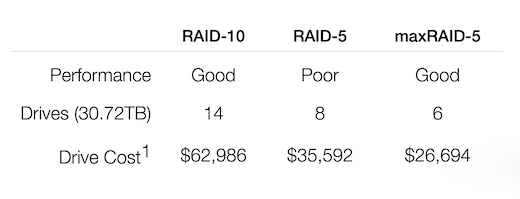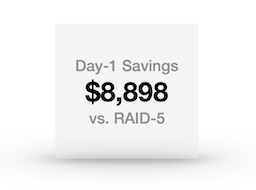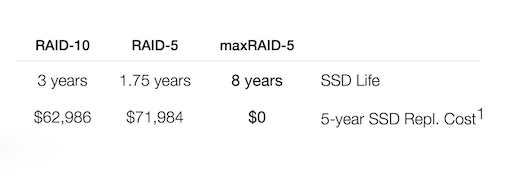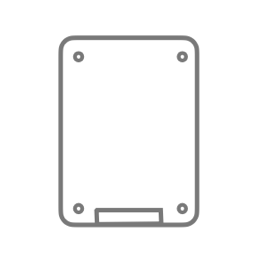This evaluation compares a 200TB database storage system using 30.72TB drives, assessing maxRAID against RAID-10 and RAID-5 solutions, including MD RAID, Xinnor, and GRAID. RAID-10 requires 14 drives, while RAID-5 needs 8. With maxRAID’s advanced compression—achieving 50% in typical database environments—you get the same capacity using just 6 drives, including parity. maxRAID increases storage efficiency, reduces wear, and ensures consistent, high performance.


Over five years, SSD replacement costs in traditional RAID setups grow significantly due to drive wear. maxRAID dramatically extends SSD life, leading to substantial long-term savings.


1: Based on Kioxia 1 DWPD 30TB SSD at $4,449. Drive costs only; excludes host system and software licenses.
How does maxRAID work
maxRAID revolutionizes storage with advanced Host FTL architecture. It optimizes data flow, converting random writes into efficient, sequential patterns, compressing data in real-time, and reducing SSD wear. The result? Lower latency, more usable capacity, and sustained performance that outlasts traditional RAID systems.

Fewer drives, more capacity

Reduce Day-1 and long-term costs.

Extend SSD lifespan with peak performance
Download Our White Paper
Please provide your email address to receive the link to download the white paper. Your information will help us keep you updated with the latest insights and innovations.


